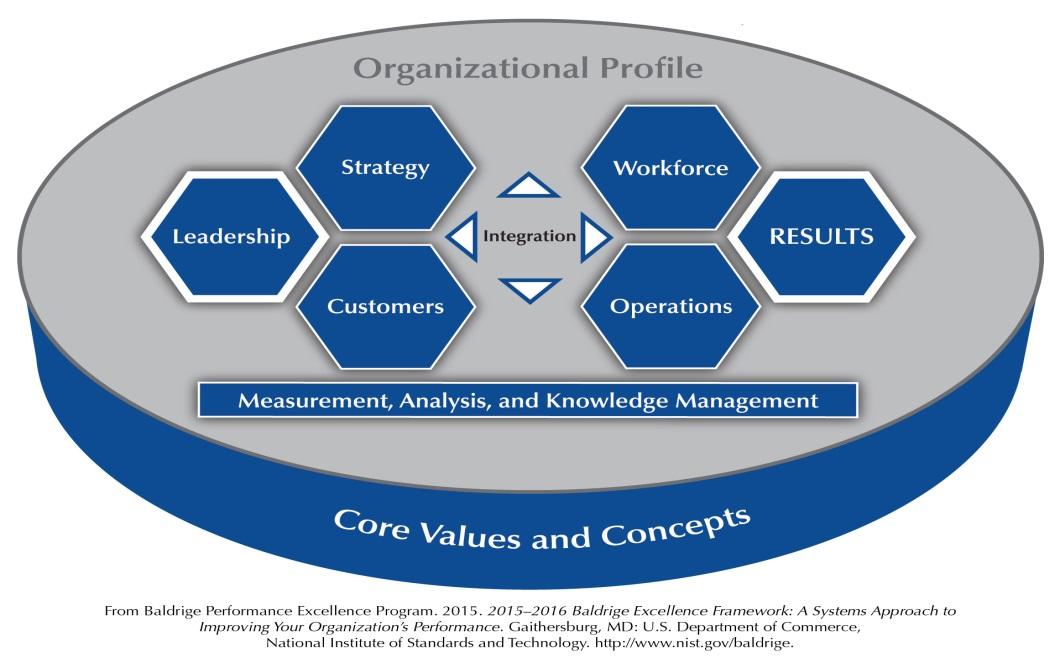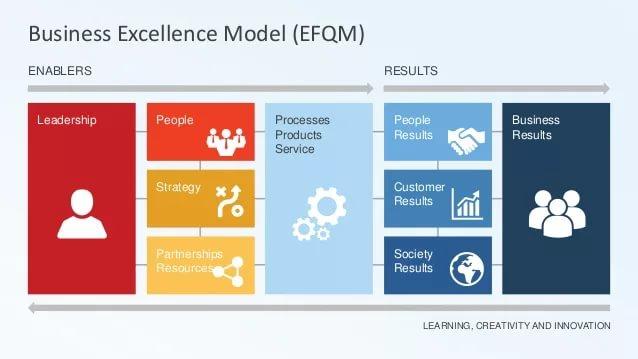Introduction
Without a doubt, gaining a competitive advantage remains one of the most important principles in terms of encouraging companies all over the world to develop and implement new practices to enhance their effectiveness. Thus, close attention must be paid to how quality awards may improve organizations’ reputation and, therefore, motivate them to improve the quality of the goods and services they offer. The given paper focuses on two quality awards recognized worldwide: the Malcolm Baldrige National Quality Award and the Swedish National Quality Award.
History and Emergence of the Quality Awards
The Malcolm Baldrige National Quality Award is one of the most famous quality awards given annually in the United States. In considering the factors that led to its establishment, it is important to note that emphasizing quality control and efficiency required the authorities of the United States to implement new methods for motivating organizations to do their best. One of these was the National Quality Improvement Act, initiated by the Congress of the United States in 1987 (Medvedeva and Stuart 689). Before the creation of this act, the authorities of the United States had laid much groundwork aimed at the development of criteria that would help to assess the performance and quality control efforts of applicants. This quality award is named after Malcolm Baldrige, the Secretary of Commerce in the 1980s, who is known to have contributed to the development of the award (Bandyopadhyay and Leonard 10).
The Swedish National Quality Award is an excellent award that was established more than twenty years ago. Its creation was initiated by the Swedish Institute for Quality and supported by the government of the country (De Geer 2). The mission of the award, as identified by specialists related to its establishment, is to promote business excellence and quality improvement for companies in different fields of activity. This award was established in 1992, a few years after the Malcolm Baldrige Award was initiated, and it has encouraged numerous companies to implement more rigid criteria to evaluate the quality of production since that time (De Geer 2). More than twenty companies have already received the award since its creation. The total number of organizations that have been regarded as claimants upon the discussed excellence award exceeds two hundred companies (De Geer 2). Specialists from the Swedish Institute for Quality decided to divide all companies that should become applicants into two large groups based on the number of employees in the company. Therefore, the institute supports organizations of different sizes and takes various factors into account when evaluating the participants.
Model Criteria
The first excellence award, named after Malcolm Baldrige, is based on the model of business excellence that was created by specialists who were instrumental in the establishment of the award. Based on the Baldrige Excellence Framework, the award uses a range of criteria that help to inform companies about the key values it supports. The criteria used in the framework under consideration are strictly interconnected with a range of values that successful businesses should support. These values include such areas of emphasis as a focus on customer satisfaction, the willingness to implement innovation to enhance quality and productivity, a strong focus on the presence of the appropriate leadership practices, and the use of a goal-oriented approach. In fact, in examining the key elements of the discussed framework, seven criteria can be distinguished. These criteria, implemented within the frame of the model, help to identify a range of questions for individuals or groups who want their businesses to be critically evaluated. Among these criteria can be found “leadership, strategy, and customers” (“Baldrige Criteria Commentary”).
The first element refers to the responsibilities of leaders and the way that they help businesses to prosper and remain prosperous. The second element touches upon practices that are employed to design and implement strategies and measure their effectiveness. The third element requires applicants to evaluate their relationships with their target customers. Also, there is a criterion that includes “measurement, analysis, and knowledge management” (“Baldrige Criteria Commentary”). The given criterion is situated in the framework to characterize the way that companies use the information to enhance their performance and increase their competitive ability. Furthermore, three important components of the discussed excellence framework are presented in terms of “workforce, operations, and results” (“Baldrige Criteria Commentary”). The fifth category is used in the framework to evaluate workforce policies applied by organizations and the environment perceived by employees. About the sixth component, it touches upon working practices used in organizations and decisions that help the organizations to design and sell products (Fig. 1). The last component of the framework refers to the results of companies related to the various aspects of work discussed in the previous sections.

In comparison to the discussed model, the EFQM framework that the Swedish National Quality Award employs involves the use of nine components that are divided into two groups (Van Schoten 908). The first group of components that helps to shape questions for organizations whose performance is to be evaluated refers to indispensable prerequisites that allow any business to exist. The given group of criteria includes “workforce, leadership, strategy, resources and partnership, and working processes” (Van Schoten 908). As is clear from the names of these components, they encourage companies to reflect on the range of practices that their leaders use as well as strategies that help them to establish a partnership with other companies or individuals. At the same time, representatives of companies that would like to win the award need to pay close attention to those practices that demonstrate their organizations’ attitudes toward their employees. In terms of working processes that present the separate criterion, it is important to point out that they include processes related both to products that companies produce and to practices that help to organize the work and distribute tasks among different departments. The second group of criteria forming the basis of the discussed framework includes the results of companies related to different fields of activity (Fig. 2). Thus, the criteria included in the second group refer to organizational results as they apply to customers, employees, the field of business, and society in general.

Categories and Participation Requirements
The Malcolm Baldrige Quality Award can be awarded to six different categories of participants. Among them are small businesses, not-for-profit organizations, and manufacturing companies. Also, it is noteworthy that this excellence award can be given to service companies. Also, the award is given to those organizations that fulfill the basic needs of human society; thus, there are educational institutions and healthcare organizations among the companies that may receive the award. The award created by the SIQ can be given to both small and large businesses; therefore, only two categories of companies can apply for the award. The only factor that is used to divide all applicants into these two categories is the number of employees—a company is regarded as small if it has fewer than two hundred employees.
One of the requirements that companies applying for the Malcolm Baldrige Quality Award must meet is that they should be headquartered in the United States. Also, companies must provide information on their operations and financial results. As a further consideration, the committee does not admit applications from companies that have existed for less than twelve months. In terms of requirements that must be met to apply for the Swedish National Quality Award, companies should be able to report on each component included in the framework and be headquartered in Sweden. Therefore, the requirements that applicants for the two awards must meet are quite similar.
Critique
In general, both excellence awards can be regarded as effective tools that help to motivate more companies in the United States and Sweden to improve their performance. The models that applicants must use to complete their reports have a great deal in common, even though the approaches to the categorization of criteria that they use are not the same. To become applicants, organizations need to be headquartered in the countries where the awards were established. Moreover, organizations that wish to apply for the Baldrige Award must fit into one of six categories, whereas there are no strict requirements concerning the type of business inherent to the Swedish National Quality Award.
Conclusion
In the end, the discussed excellence awards are well-known due to the practical effects that they produce. Emphasizing the business results of companies, they motivate organizations to break new ground. It is worth the cost as the reputation of an award-winning company will improve rapidly.
Works Cited
“Baldrige Criteria Commentary.” NIST, n.d. Web.
“Business Excellence Model (EFQM).” Regisbook. 2017. Web.
Bandyopadhyay, Prabir Kumar, and Denis Leonard. “The Value of Using the Baldrige Performance Excellence Framework in Manufacturing Organizations.” The Journal for Quality and Participation, vol. 39, no. 3, 2016, p. 10.
De Geer, Anna. “The Swedish Quality Award: A Model for Excellence.” APO News, vol. 45, no. 2, 2015, pp. 2-3.
Medvedeva, Tatiana A., and Stuart A. Umpleby. “A Multidisciplinary View of Social and Labor Relations: Changes in Management in the US and Russia as Examples.” Cybernetics and Systems, vol. 46, no. 8, 2015, pp. 681-697.
Pesec, Bruno. “Organizational Profile.” Bpesec. 2016. Web.
Van Schoten, Steffie, et al. “The EFQM Model as a Framework for Total Quality Management in Healthcare: Results of a Longitudinal Quantitative Study.” International Journal of Operations & Production Management, vol. 36, no. 8, 2016, pp. 901-922.